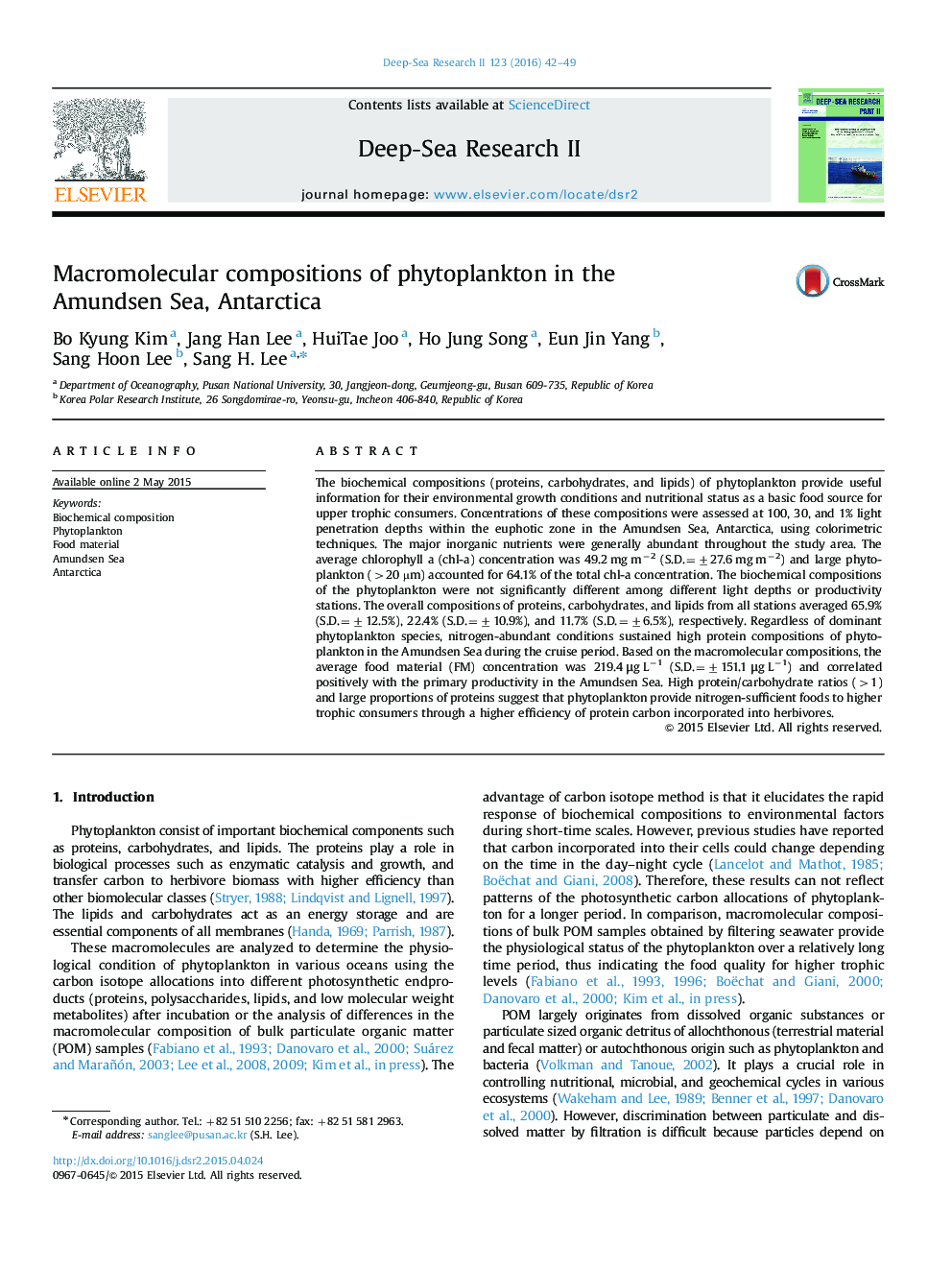| Article ID | Journal | Published Year | Pages | File Type |
|---|---|---|---|---|
| 6383991 | Deep Sea Research Part II: Topical Studies in Oceanography | 2016 | 8 Pages |
Abstract
The biochemical compositions (proteins, carbohydrates, and lipids) of phytoplankton provide useful information for their environmental growth conditions and nutritional status as a basic food source for upper trophic consumers. Concentrations of these compositions were assessed at 100, 30, and 1% light penetration depths within the euphotic zone in the Amundsen Sea, Antarctica, using colorimetric techniques. The major inorganic nutrients were generally abundant throughout the study area. The average chlorophyll a (chl-a) concentration was 49.2 mg mâ2 (S.D.=±27.6 mg mâ2) and large phytoplankton (>20 µm) accounted for 64.1% of the total chl-a concentration. The biochemical compositions of the phytoplankton were not significantly different among different light depths or productivity stations. The overall compositions of proteins, carbohydrates, and lipids from all stations averaged 65.9% (S.D.=±12.5%), 22.4% (S.D.=±10.9%), and 11.7% (S.D.=±6.5%), respectively. Regardless of dominant phytoplankton species, nitrogen-abundant conditions sustained high protein compositions of phytoplankton in the Amundsen Sea during the cruise period. Based on the macromolecular compositions, the average food material (FM) concentration was 219.4 μg Lâ1 (S.D.=±151.1 μg Lâ1) and correlated positively with the primary productivity in the Amundsen Sea. High protein/carbohydrate ratios (>1) and large proportions of proteins suggest that phytoplankton provide nitrogen-sufficient foods to higher trophic consumers through a higher efficiency of protein carbon incorporated into herbivores.
Related Topics
Physical Sciences and Engineering
Earth and Planetary Sciences
Geology
Authors
Bo Kyung Kim, Jang Han Lee, HuiTae Joo, Ho Jung Song, Eun Jin Yang, Sang Hoon Lee, Sang H. Lee,
